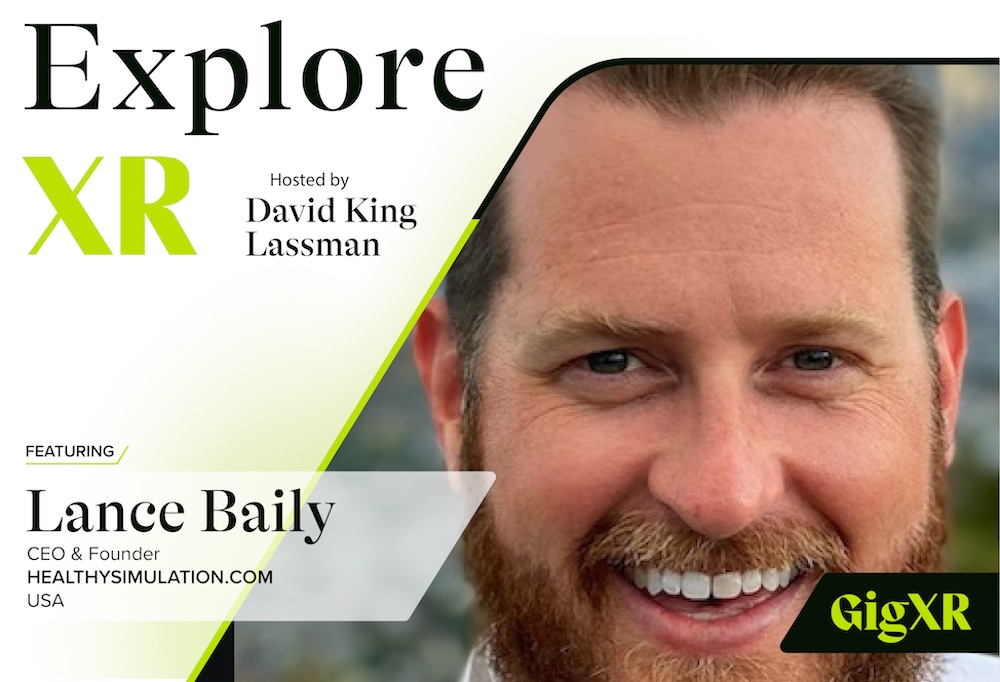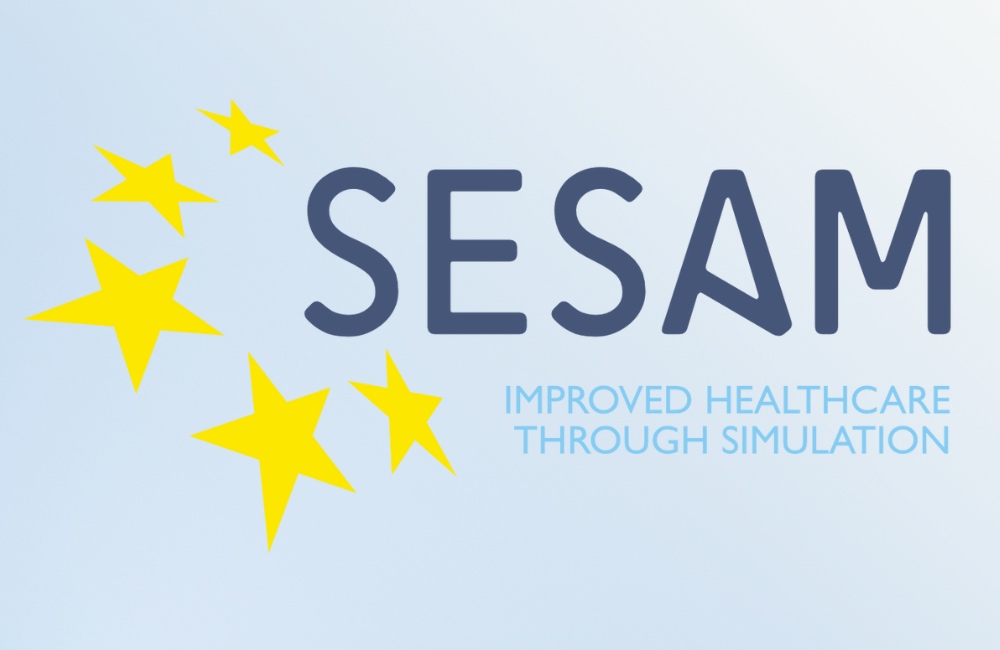Podcasts are becoming increasingly popular, and have emerged across the healthcare simulation space to offer simulationists and learners guidance and insight. One such podcast, “Explore XR” covers extended reality and the technology’s uses across society. Presented by GigXR — the leading XR healthcare content delivery platform — the podcast includes educators (including the founder of HealthySimulation.com, Lance Baily) from universities, healthcare executives, and technologists working on extended reality every single day. Host David King Lassman covers many use cases for XR, and the technology’s ability to further the ability to learn, as well as the technology that goes into delivering XR.
In episode 9 of Explore XR, King Lassman is joined by Baily, who has been at the forefront of healthcare simulation for well over a decade, serving as the Director of the Clinical Simulation Center of Las Vegas from 2009 to 2012. In 2010 Baily founded Healthy Simulation, a website that has become the world’s leading online resource website dedicated to supporting the healthcare simulation industry (attracting over 35,000 simulation readers a month across the globe).
Within this Explore XR episode, Baily explains how he first entered the healthcare simulation space. As he wished to contribute to the industry in a meaningful way, he initially went back to school to become an EMT and a firefighter. At the time, his mother, Kim Baily, was the Director of Nursing at El Camino College. Here, Baily first encountered the clinical simulation learning potential exhibited by a SimMan Classic.
“While I was trying to become a firefighter in the area, I also learned about Simtech jobs. I thought they were super fun and I had my hands full almost immediately helping a lot of different community colleges with their simulation technology operations,” Baily shared. “From there, I got an opportunity to become the Director of the Clinical Simulation Center of Las Vegas for the Nevada system of higher education.”
This experience was just the beginning. Transitioning into leadership roles, and helping learners navigate through the clinical simulation training process, Baily was able to look at the healthcare simulation industry as a whole. During the podcast interview with King Lassman, Baily explains that he simply came to recognize that there weren’t a lot of online resources specifically geared toward improving patient safety outcomes using simulation-based technology.
“I thought maybe we could build a website that would act as a global resource to space. I think we had about 30 people come to the website that first month, but we have grown by leaps and bounds,” Baily said. “This year we hit 45,000 unique visitors to the website, over 21,000 email newsletters, and about 30,000 social media followers.”
As an emerging leader in the space, Baily further recognized that very few people had gone through a professional educational degree pathway to gain their simulation-based knowledge. Thus, he continuously sought to find new innovative ways to bring simulationists of all different backgrounds and skill sets together.
“If we all come together and start to share these experiences and the knowledge from our own unique backgrounds that brought us into simulation, we can walk away with so much more,” Baily explained. “That’s always been the kind of concept and the idea behind a lot of the projects that I’ve done. Now I’m just really focused on HealthySimulation.com and creating content that’s going to really help people to move the needle as best as possible — for their own programs and for their professional development.”
Providing insight on why healthcare simulation has become imperative in the current medical landscape, Baily explained that what’s really important to consider is that educators look first at other industries that have fully mandated and regulated the use of clinical simulation with regards to training outcomes. He explained that these industries include both military simulation and aviation simulation.
“We’re at the start of our journey, like aviation, into a world that is safety-first. Right. So aviation has become one of the safest industries in the world with 33,000 international flights a day,” Baily said. “One of the things that we need to think about in terms of our space, not only is medical error, the third leading cause of death in the United States with an estimated 220 to 440,000 patients dying a year annually but also now COVID-19.”
Ultimately, he stresses that an “ounce of prevention is worth the pound of cure.” Baily highly recommends educators experience clinical simulators and patient safety movements, such as the one brought forth by the Patient Safety Movement Foundation. Together, these components help promote standard outcomes to prepare learners for the realities of their future positions.
“There’s countless benefits, lots of research pointing out things like 88% reduction in lethal infection rates from CVC, just-in-time simulation training, 7-1 costs, savings, and crazy numbers like 80% increase in knowledge after just one VR experience,” Baily said. “There’s a ton of stuff out there supporting both the profitability of investing in simulation and better outcomes as well as better patient safety outcomes. So there are lots of reasons for everyone to think about healthcare simulation as being in line for the same kind of revolution that took place in aviation.”
Listen to the full podcast episode here:
More About Healthcare Simulation Podcasts
Healthcare Simulation Podcasts are providing unique and fascinating content that directly supports the evolution of the methodology across the entire healthcare industry. Here today we share about four of the most prominent podcasts created by expert clinical simulation champions from around the world, with topics that focus on the technical to the administrative and everything in between. These useful medical simulation podcasts are perfect listening material for those on the go — so bookmark them on your favorite audio medium today!








